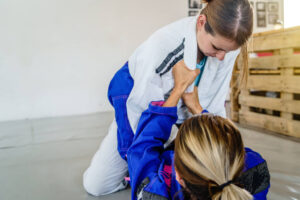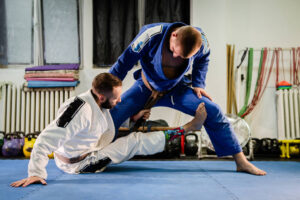Are you searching for Brazilian Jiu Jitsu near you? Look no further! In this comprehensive guide, we will answer your questions about learning Brazilian Jiu Jitsu, its inclusivity, terminology, and the essence of Jiu Jitsu itself.
How Can I Learn Brazilian Jiu Jitsu?
Learning Brazilian Jiu Jitsu (BJJ) is an exciting journey that offers both physical fitness and self-defense skills. Here’s how you can get started:
- Find a Local BJJ School: Begin by searching for Brazilian Jiu Jitsu academies or schools near you. Online platforms like Google or specialized directories can help you locate a BJJ training center.
- Visit the Academy: Once you find a nearby academy, visit it to get a feel for the environment, meet the instructors, and understand the class schedules.
- Enroll in a Beginners Class: Many BJJ schools offer specific classes for beginners, often referred to as “fundamentals” or “introductory” classes. These are ideal for newcomers.
- Invest in Gear: BJJ requires specific gear, including a gi (uniform), rash guards, and a mouthguard. You can usually purchase these items at the academy or online.
- Regular Practice: Consistency is key in mastering BJJ. Attend classes regularly, practice techniques, and spar with training partners.
- Ask Questions: Don’t hesitate to ask questions and seek guidance from your instructors and fellow students. BJJ is a community that thrives on collaboration and support.
Is Brazilian Jiu Jitsu for Girls?
Absolutely, Brazilian Jiu Jitsu is for everyone, regardless of gender! BJJ is known for its inclusivity and effectiveness, making it an excellent choice for both men and women. In recent years, the popularity of BJJ among women has grown significantly. Many academies have female instructors and offer women’s-only classes to create a welcoming environment for all.
BJJ empowers individuals by teaching them self-defense techniques that rely on leverage and technique rather than brute strength. It promotes physical fitness, mental resilience, and self-confidence, making it a fantastic choice for women seeking a well-rounded martial arts experience.
What is Brazilian Jiu Jitsu Called?
Brazilian Jiu Jitsu, often abbreviated as BJJ, is a martial art and combat sport developed in Brazil. It is derived from the Japanese martial art of Judo, which was adapted and refined by the Gracie family in Brazil. BJJ emphasizes ground fighting and submission techniques, making it highly effective in self-defense situations and combat sports like mixed martial arts (MMA).
What is the Meaning of Jiu Jitsu?
The term “Jiu Jitsu” or “Jujutsu” (also spelled “Jujitsu”) has its roots in Japanese martial arts. It translates to “gentle art” or “gentle technique.” The “gentle” aspect refers to the principle of using an opponent’s force and movements against them rather than relying solely on one’s own strength. This concept is fundamental to BJJ, where technique, leverage, and strategy take precedence over physical power.
In summary, Brazilian Jiu Jitsu is an inclusive martial art suitable for people of all genders and backgrounds. To learn BJJ, you can find a local school or academy, enroll in beginner classes, and embark on an exciting journey of self-improvement and self-defense. The term “Jiu Jitsu” itself reflects the art’s emphasis on technique and leverage over force, making it a valuable skill for individuals of all ages and abilities. Embrace the world of BJJ near you and unlock the potential for personal growth and empowerment.
Learn more at Wiki as well.



